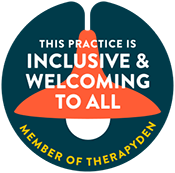A More In-Depth Look at Eye Movement Desensitization and Reprocessing (EMDR) Therapy
EMDR is an evidence-based treatment for healing emotional wounds in a non-invasive manner. Unlike traditional talk therapy, which focuses primarily on verbal processing, EMDR targets the underlying neurological patterns of distress, allowing for faster and more profound healing. It is particularly effective for individuals who have experienced trauma or those who struggle with traditional therapeutic methods.
The Benefits of EMDR
01
History-Taking and Treatment Planning
In this initial stage, the therapist collects information about the client’s background and life experiences. Together, they create a treatment plan, outlining specific targets for processing.
02
Preparation
The therapist builds rapport with the client, explains the EMDR process, and equips the client with tools to manage emotional reactions that may arise during therapy.
03
Assessment
During this phase, the therapist helps the client pinpoint specific traumatic memories, along with associated images, thoughts, emotions, and physical sensations.
04
Desensitization
The client concentrates on the chosen memory while performing bilateral stimulation (such as eye movements, tapping, or auditory cues). This helps to reduce the emotional charge tied to the memory.
05
Installation
In this step, the therapist supports the client in adopting and reinforcing positive beliefs about themselves that are connected to the target memory, working to make these beliefs feel authentic and deeply held.
06
Body Scan
The client mentally scans their body to identify any lingering physical discomfort related to the memory. If any distress is noticed, bilateral stimulation is used to help release it.
07
Closure
The session concludes with a review of the progress made, ensuring the client leaves feeling grounded, safe, and ready for the next session.
08
Reevaluation
At the start of a new session, the therapist reviews the client’s progress, checks for any unresolved material, and determines what to address moving forward.
Healing IS possible.








